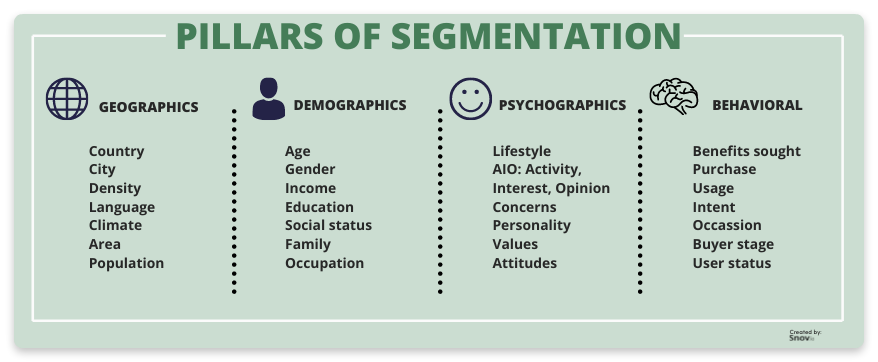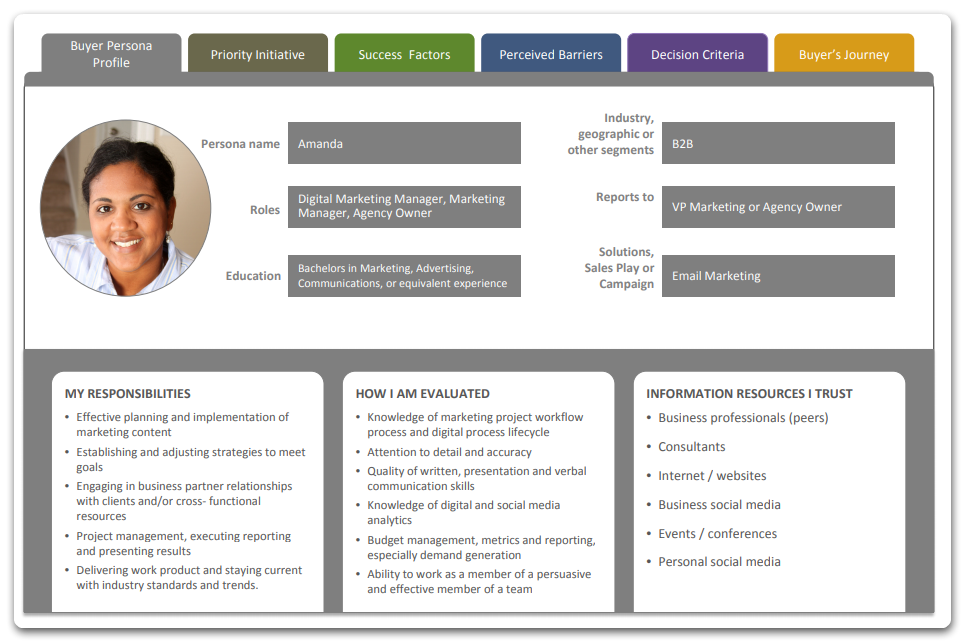Each year brings more technological innovation into our lives. Social media platforms have made cross-channel communication more accessible than ever before. But even with the most advanced forms of communication, email still plays a large role in marketing.
Email communication has advanced exponentially in the last decade. The use of email has become an everyday thing for professionals and non-professionals alike. According to a forecast, the number of email users is expected to reach 4.3 billion in the next three years.

With this projection, it comes as no surprise that targeted email marketing should be a decisive part of growing your business project.
Outline:
Why is targeted email marketing important?
It’s relevant
Usually, most of us check emails first thing in the morning. But, let’s be honest; we don’t read every email we receive. The reason is simple. It’s just not of our interest, or its contents are not relevant. That’s where targeted email marketing comes in handy. As a marketer, you want to attract and connect with your audience, as well as excite their interest in your brand.
But as customers are bombarded daily with numerous generic emails and newsletters, it’s also harder to retain their attention and commitment. An inbox full of dull, disinteresting, and impersonal messages is one of the sure reasons for the low email open rate. An intriguing subject line should make recipients curious and eager to discover the contents of your correspondence. After all, 47% of emails are opened based on the subject line alone.

Having a great product but an indifferent approach to marketing will only result in emails being unread, deleted, or, the worst of the worst, marked as spam. On top of it all, the unsubscribe option looms on businesses as a final blow for their emailing register.
Connecting personally with the broadest possible audience is a crucial component of a successful business plan. It can only result in improved customer satisfaction, loyalty, and retention.
It’s personalized
Transparency is a central theme in the topic of online security. People are more akin to doing business with organizations that are clear in their practice, likeability, and trustworthiness. In fact, 93% of online shoppers cite their data security as a concern. Being transparent with collected data will elicit both trust and engagement from the customers’ side.
However, the problem lies in marketing campaigns themselves. The inherent goal of brand advertising is to reach the most significant volume of prospective buyers. Consequently, the campaign tends to be impersonal and detached from a potential client.
Targeted email marketing can advance the overall campaign and bring with it unexpected benefits. This process helps resolve the disconnect between the public and business, as well as builds brand and product awareness. Personalized emails are 26% more likely to be clicked on and read. As a result, vendors can acquire new leads, expand their database, and, most importantly, connect and understand their target audience.

How targeted email marketing works
Whether you are a small or large company, the primary mission is, at times, comparable: to commercially grow and, at the same time, provide the highest performance and service to your customers. But to achieve that, you first need to understand your customers to please them.
Every single client is different, with their unique motives and aspirations. Therefore, to connect with each individual, a more personal approach should be utilized in email marketing. The correctly chosen campaign can do wonders for your revenue stream.
Targeted email marketing is email messaging devised to communicate with a specific section of your mailing database. In simplest terms, it’s a way to create and send highly personalized email marketing campaigns based on segmented characteristics.
|
💡Pro-tip We recommend collecting high-quality targeted leads with Snov.io’s email search software. With this tool, you can find email addresses anywhere on the web! |
Segmentation is an essential tool that can break down each client’s characteristics into patterns. It exemplifies who your customers are, their location, behavior, buying habits, or their approach to your company and its products.
The first step is to strategically segment clients based on their characteristics into the following sections:
- Geographic (e.g., location, area, country, language)
- Demographic (e.g., age, gender, education, family)
- Psychographic (e.g., interest, activities, personality, values)
- Behavioral (e.g., intention, habits, user status, buyer stage)

The number of segments is not limited; however, four common ones are the above. The more there are, the clearer picture will emerge about prospects. They can be branched categorically based on the purposes of the channel, for example, e-commerce. A good rule is to find out anything that you might consider useful.
Still, a good reminder is not to overdo it, as it can cause confusion and render the whole strategy ineffective. The best approach is to start with the most common characteristics and, if needed, increase the number of segments.
With the collected clients’ input, you can establish an overall picture of the targeted customer base, their wants, and desires.
How to grow business with targeted email marketing campaigns
It’s time to start developing a targeted campaign. We can break this section into supportive tips.
1. Collect your customers’ data
It’s vital to collect as much information as possible. Creating a distinct user persona for each segment would make it simpler to understand who you wish to address. It can include clients’ names, likes/dislikes, interests, or anything relevant. Based on the created personas, you will be able to connect your product with a targeted audience, especially if you’re in a niche market.

Think about it in terms of creating a virtual avatar for your customer. You can define, select, and assign each attribute to a chosen prospect. Matching characteristics, you will be able to respond personally to each customer and predict and assemble the right campaign at the right time.
For example, let’s say it’s close to a major holiday like Christmas. It’s the busiest time of the year for retailers and customers, and last-minute shopping is well underway. This is a perfect opportunity to utilize all collected information on your prospects and run a targeted email marketing campaign tailored to those last-minute purchases.
2. Create content based on segments
Nothing can beat a friendly, positive approach. Combined with a personal touch that answers buyers’ needs, it’s a powerful instrument that can help develop exceptional customer relationships. Clients will always return to brands that can meet their expectations and remember them as a relevant and useful source. As a bonus, they might recommend your company in their inner professional and private social circle.
It’s highly likely that customers will feel differently about the purchase during different buyer journey stages. Or, they can have various monetary means. For example, a student is more likely to look for sample sales and clearance than a working professional in their 40s who can afford goods at full retail price. In essence, relevant content means a higher chance of purchase, so consider all your segmentation criteria.


3. Choose and connect your software with your channels/CRM
The best practice of not getting lost in emails and campaigns is to connect all your channels: CRM, email, online store, and helpdesk. The ideal targeted email marketing service can offer a well-defined segmentation based on the profile data of marketing personas.
By keeping all channels in one place, your collected data will be easily accessible and ready to use at any time. It will grant customers the option for email viewability across separate devices. The response handling and ticketing can be monitored daily by assigned agents. Besides, you will be able to update all parts of the information flow to meet the designed criteria or modified data.
Market direction, customers’ situation, and prospective buyers change frequently. Investing in fully integrable, feature-packed, and cost-effective software is an absolute necessity for a profitable operation.
Creating multichannel access to your business allows more fluid communication between B2B or B2C marketing.
4. Measure and act upon the received feedback
Customer’s voice is an all-powerful resource of opinions. The simplest way how businesses can hear it is by encouraging clients to leave email feedback.
To be proactive, companies should implement feedback request emails, opt-in forms, or surveys. Even straightforward welcome and thank-you emails will do the trick. It’s the best and most common practice to find out your customers’ suggestions and act upon them.

A good reminder is to not overdo it, as clients can start feeling harassed. Unlike social media, before sending someone an email, you first have to ask and be granted permission to do so. The messages’ frequency should depend on the customers’ buying behavior. Sending emails too often can result in losing already established leads.
Another excellent way to increase customers’ interaction is to A/B test your subject lines. Picking up two subject lines to compare can enhance your email’s strength chosen directly by prospects. This way, you won’t have to worry about any weak reaction your correspondence might evoke. A/B testing is a feature that email service providers usually offer automatically to their users.
Besides, you can also use reporting and analytics tools, as well as campaign’s statistics usually available in sales automation tools. The amassed data can help with dividing customers and developing further segmentation.
5. Review and analyze your tactic
Segmentation is a helpful guide to deliver highly personalized content, but only if it’s analyzed and evaluated repeatedly. Recognize and share all details of a successful targeted email marketing campaign.
Don’t omit even negative feedback. It sounds like a cliche, but you can’t satisfy everyone. For each campaign, try to focus on not only positive but also negative aspects and improve upon them. Revision is a critical part of the process. Customers will notice improvements, and it will reflect in your responses and sales.
6. Bonus tip: Mistakes to avoid
Don’t forget to use reference points
No matter how many segments you create, it’s crucial to remember not to overlap emails. Sending emails designed for a specific segment to a completely unrelated one can harm a potentially successful targeted email campaign. A great way to narrow down your audience is to create a road map or a calendar as a reference point.
Avoid spam
Second, avoid having your emails marked as spam. Spam filters can mark emails when using dynamic IP instead of a dedicated IP from a technical side. By checking IP reputation regularly, you can significantly lower the chance of getting flagged as spam.
Individual words can be considered spam triggers as well. Don’t forget that spam filters track all messages and contents. If any words are overused, they can set off filters, and your whole sequence can end up in a spam folder. The best practice is to test emails using spam word checkers actively.
Clean your email list
Any email list will require cleaning from time to time. Before starting a new campaign, test and verify your email contacts. Being aware of a bounce rate can keep your reputation high, and you will avoid being blocked by the ESP.
Don’t stop researching and improving
One of the biggest mistakes is to stop frequently researching the market, prospects, and newly developed devices. The world of trade is fast-growing, and it would be a loss not to dive in and benefit from what it can offer.
Wrapping it up
Targeted email marketing is a fantastic vehicle that, when used correctly, can drive your business revenue to new heights and add a personal touch to your marketing strategy. It allows for both steady growth and an attractive friendly approach to your communications. It can be challenging at times, but with the appropriate philosophy, time, and planning, you will deliver a highly personalized and flawless customer experience with each targeted email campaign.






